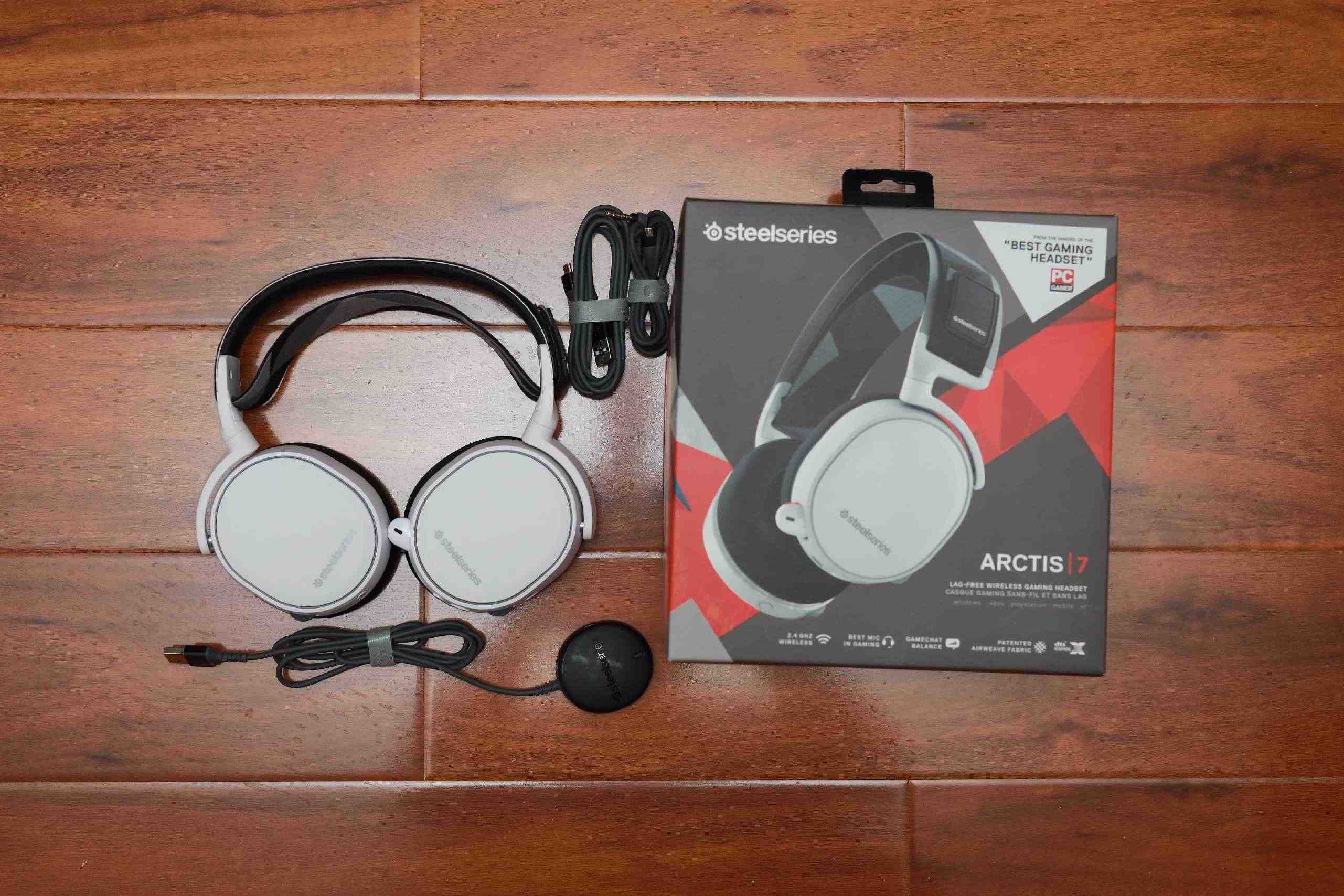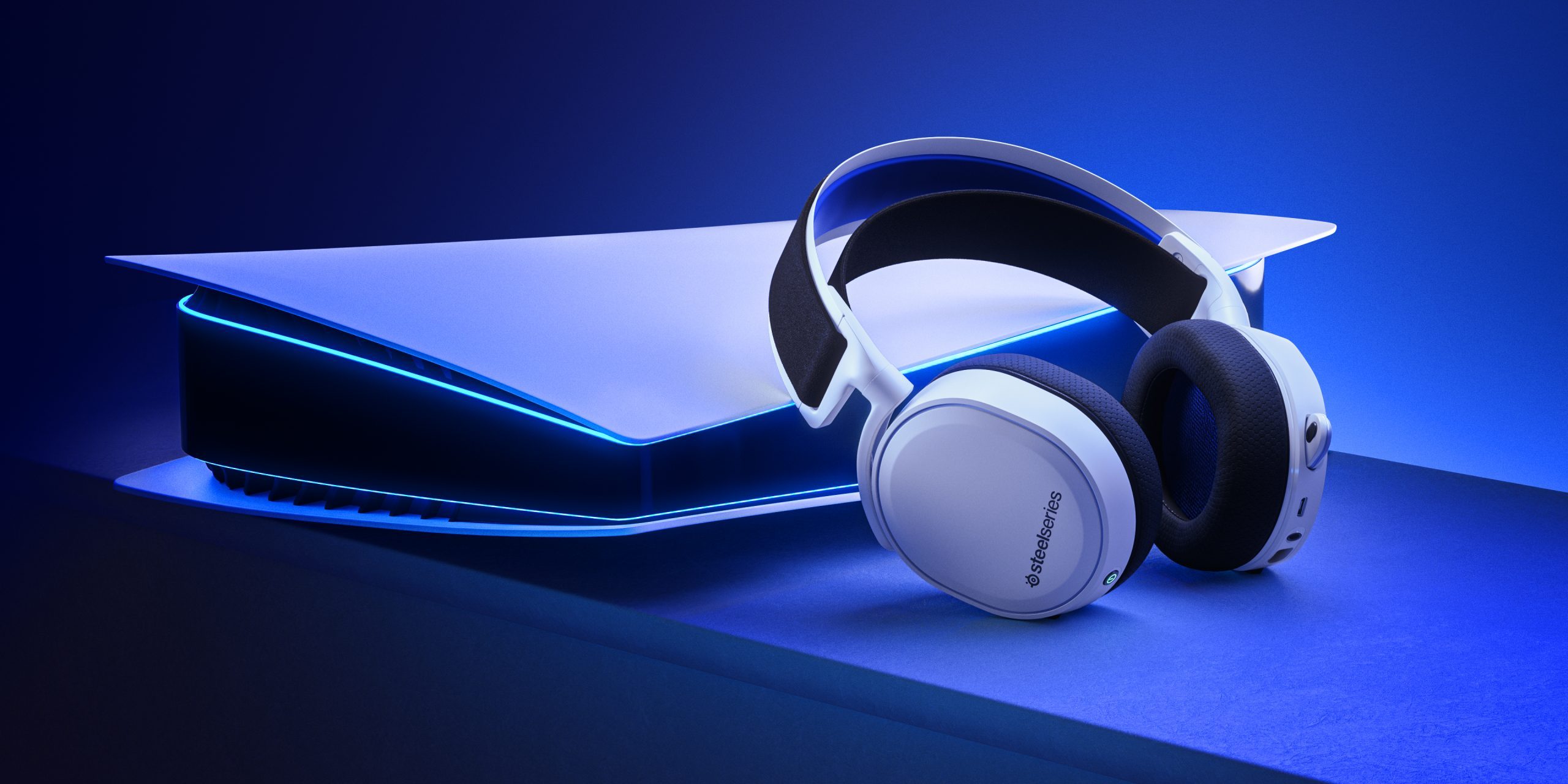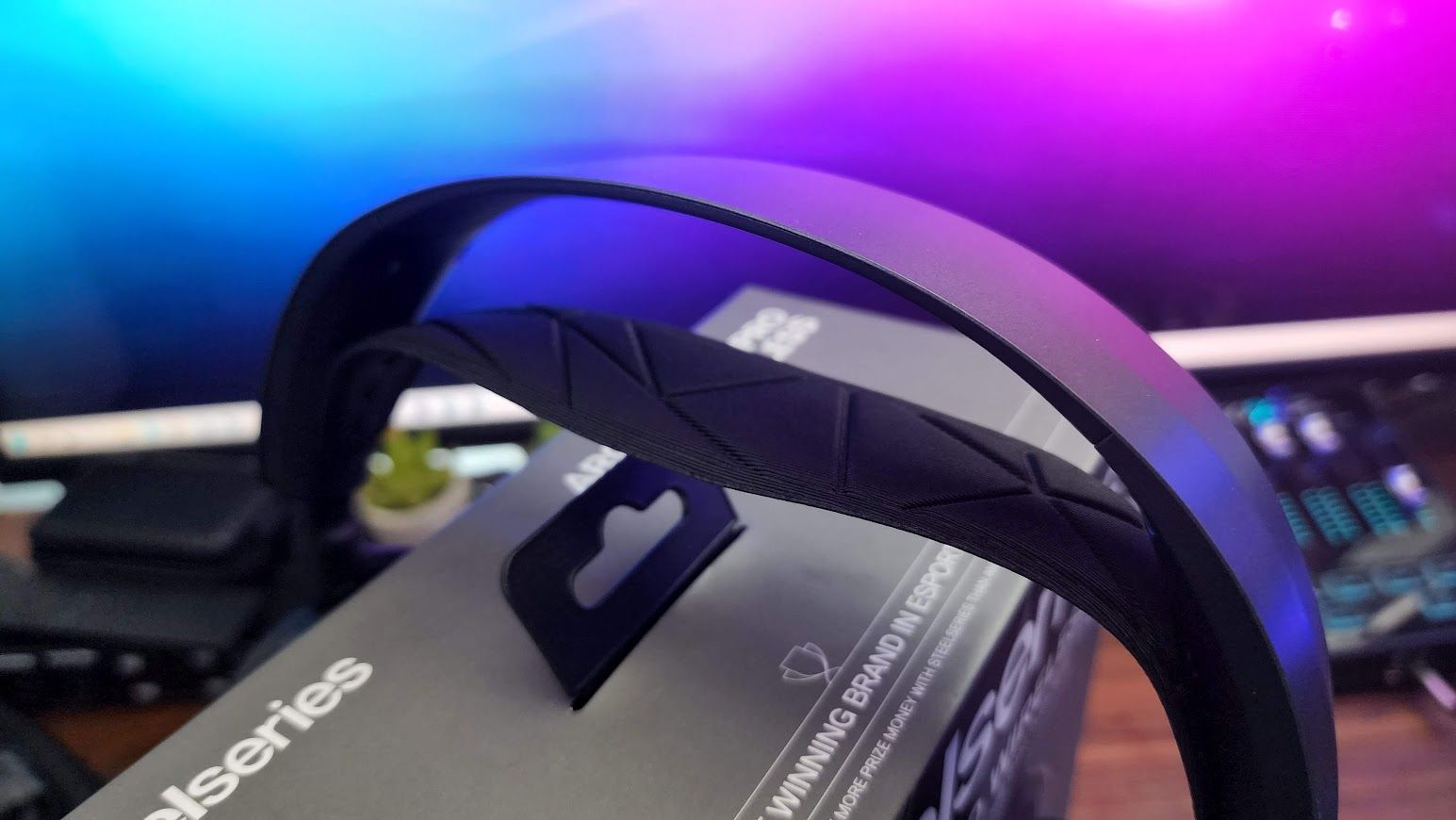SteelSeries has established its reputation in the gaming community by producing a range of premium peripherals, from keyboards to mousepads, each designed specifically for gamers. The brand is well-known for its headsets too, having launched acclaimed models like the Arctis 7 and the newer Arctis 9x. In our review of the SteelSeries Arctis 7, we will evaluate its performance after three years and determine if it remains a worthwhile purchase today.
Table of Contents
SteelSeries Arctis 7 Review Summary
The SteelSeries Arctis 7 has several amazing features if you can get beyond the lackluster bass and how shaky the headset is when in motion. It’s one of the most stylish wireless gaming headsets on the market, and it’s also comfy and durable. Its sound quality is adequate for enhancing your gaming experience, especially given how nicely the surround sound works. To top it off, it has a battery life that rivals the majority of its competitors. If you’re looking for a mid-range wireless gaming headset, you’ll have difficulty finding one that compares to the Arctis 7.
Pros
✓ Sleek and stylish design
✓ Flexible yet sturdy
✓ Very comfortable
✓ Excellent battery life
✓ Good sound and mic quality
Cons
✗ Lackluster Bass
✗ Easily dislodged
✗ Surround sound can only be accessed through the app
What is the SteelSeries Arctis 7?
SteelSeries’ Arctis series includes both wireless and wired gaming headsets. The SteelSeries Arctis 7 is a wireless headset designed for gamers who want high-quality audio for their PCs and consoles without having to deal with a tether. The Arctis 3 does offer a Bluetooth version, but this is SteelSeries’ first completely wireless headset. While it was first released in 2017, this gaming headset was upgraded last year with small design modifications and wireless range improvements, among other things.
With a reasonable $179 price tag, the Arctis 7 may be described as a mid-range wireless headset that provides gamers with great sound quality, low-latency connectivity, a decent microphone, and long battery life. Its style is a fantastic mix of styles, making it ideal for those who want to avoid gaming headsets that are too edgy or busy-looking.
SteelSeries Arctis 7 Features

Battery Life
SteelSeries’ Arctis 7 has a battery life of up to 24 hours on a single charge, which blows away the Sennheiser GSP 670’s already amazing 16 hours. Of course, this is dependent on several circumstances, so a 20-hour estimate is more reasonable but still outstanding.
Stand/Carry Case
The Arctis 7 doesn’t come with any extras outside the wires and detachable boom mic, so don’t anticipate a gleaming stand or case.
Active/Passive Noise cancellation
Without the aid of Active Noise Cancellation technology, the Arctis 7 isolates noises as effectively as you’d want and can satisfactorily block out small ambient sounds at home or when you’re out and about. However, don’t expect it to drown out the din of your morning commute.
Software
The Arctis 7 uses the SteelSeries Engine 3 software package, which allows you to adjust the device’s audio range and output as well as toggle the 7.1 surround sound. While installing the accompanying software only to enable the surround sound capability isn’t the worst thing in the world, it is a pain, especially for console gamers who want a plug-and-play experience.
Connectivity
Wireless communication is provided via a USB dongle, which is compatible with a PC, PlayStation 4, and a docked Nintendo Switch. It also comes with a 3.5mm cable that you may use to connect to any of your devices through a wired connection. Keep in mind, however, that you’ll be missing out on several software features and audio channels that are only available via wireless.
Sound Quality
While the bass on the Arctis 7 is adequate, it is by far its worst feature, as the bass isn’t as distinct or amplified as it is on other rival headsets. Explosions and ambient rumble sound in video games may be underwhelming, particularly to audiophiles who love deep, powerful bass. The bass is decent, but not as pronounced as some would like, especially for people who prefer bass-heavy music such as Hip-Hop, R&B, and EDM.

The mids are superb, albeit the lackluster bass in parts of the lower levels can generate jumbled sounds. For the most part, trebles are fine, but there are some discrepancies in the low and mid-treble. Low-treble dips could make video game voice-overs and song vocals sound fuzzier, while a mid-treble spike could make higher-pitched phrases sound shrill.
Overall, the Arctis 7 isn’t the best gaming headset in terms of audio quality, but it’s more than capable of providing a satisfying listening experience to the typical gamer.
Microphone
The mic on the headset has good recording quality and is Discord-certified, which means it automatically processes your audio in the same way the app does. It also has outstanding noise-canceling capabilities, which can distinguish your speech from loud sounds in your environment, as if you were at a gaming event or an internet cafe.
Surround Sound
The Arctis 7 comes with outstanding 7.1 surround sound technology, which brings games that support 3D audio to life. It’s particularly beneficial in shooter games like Escape from Tarkov and PUBG, where you can place your foes based on their noises and direction of travel.
What’s SteelSeries Arctis 7 Like to Use?
The Arctis 7 is extremely comfortable, as are most SteelSeries headsets, thanks to its distinctive adjustable velcro strap and flexible earcups that don’t trap much heat. It doesn’t handle movement well, and even minor twists and turns may be enough to remove it from your ears, let alone getting up and walking about. This is especially frustrating because it is a wireless headset, and mobility should be one of its benefits.
The headset works flawlessly right out of the box, and the USB dongle makes attaching it to your device of choice a breeze. If you want to fine-tune your audio, even more, the SteelSeries Engine 3 that comes with it is simple to use and shouldn’t cause you any problems. Unfortunately, if you want to use the surround sound option, you’ll have to download the app first.
The Arctis 7 is straightforward to use. A volume dial, microphone button, and three connectors are located on the bottom of the left earcup: a four-pin port, a Micro USB port, and a 3.5mm port. The power button and a dial for selecting between supported audio channels are located on the bottom of the right earcup. The retractable mic may be extended from the left headphone to a length of about 10 cm.
The Arctis 7’s flexibility and range of devices are limited compared to Bluetooth-enabled headsets because it uses a 2.4GHz wireless RF USB dongle. However, you will benefit from nearly minimal latency, which is ideal for online gaming with pals.
Aesthetics
Unlike most gaming headsets, the Arctis 7 doesn’t make an effort to seem like it’s designed for gaming. There’s no edgy, futuristic design or complex RGB lights. Only a couple of elegant, oval-shaped earcups and the headband’s signature adjustable suspension headband exude flair. The porous, oversized earcups are softly padded to fit larger ears and provide plenty of ventilation to keep you cool. While the majority of the headset is designed to be extremely flexible, it is also surprisingly durable and capable of withstanding the odd bump or drop.
Final Thoughts
For a headset in this price range, the SteelSeries Arctis 7s has a lot to offer. Its understated yet attractive appearance will appeal to gamers seeking a more understated gaming headset, and its comfortable fit, long battery life, and above-average sound quality make extended gaming sessions a joy.
The surround sound element will appeal to shooter lovers, and it will become increasingly useful in competitive encounters. The Arctis 7 is one of the better mid-range wireless gaming headphone alternatives available, despite its subpar bass profile that may turn off audiophiles and its lack of stability limits its use away from a couch or desk.
